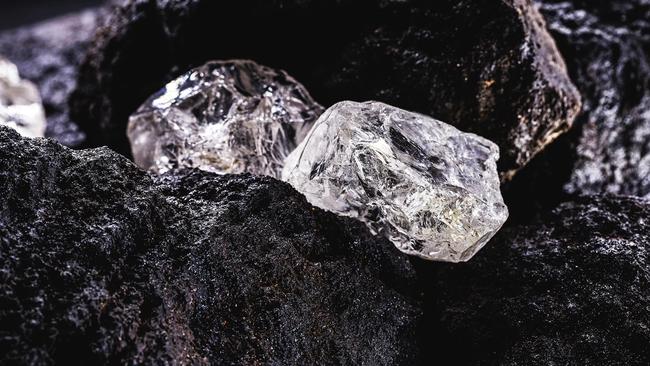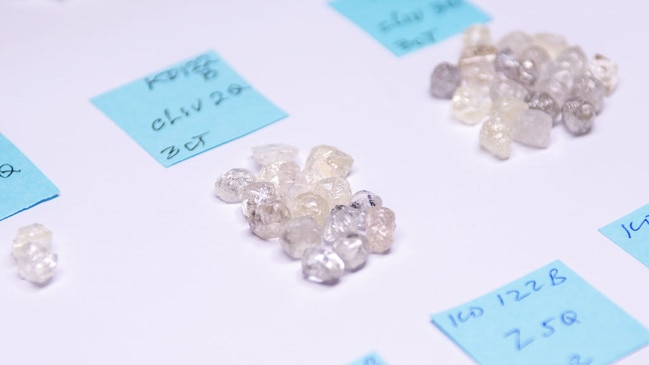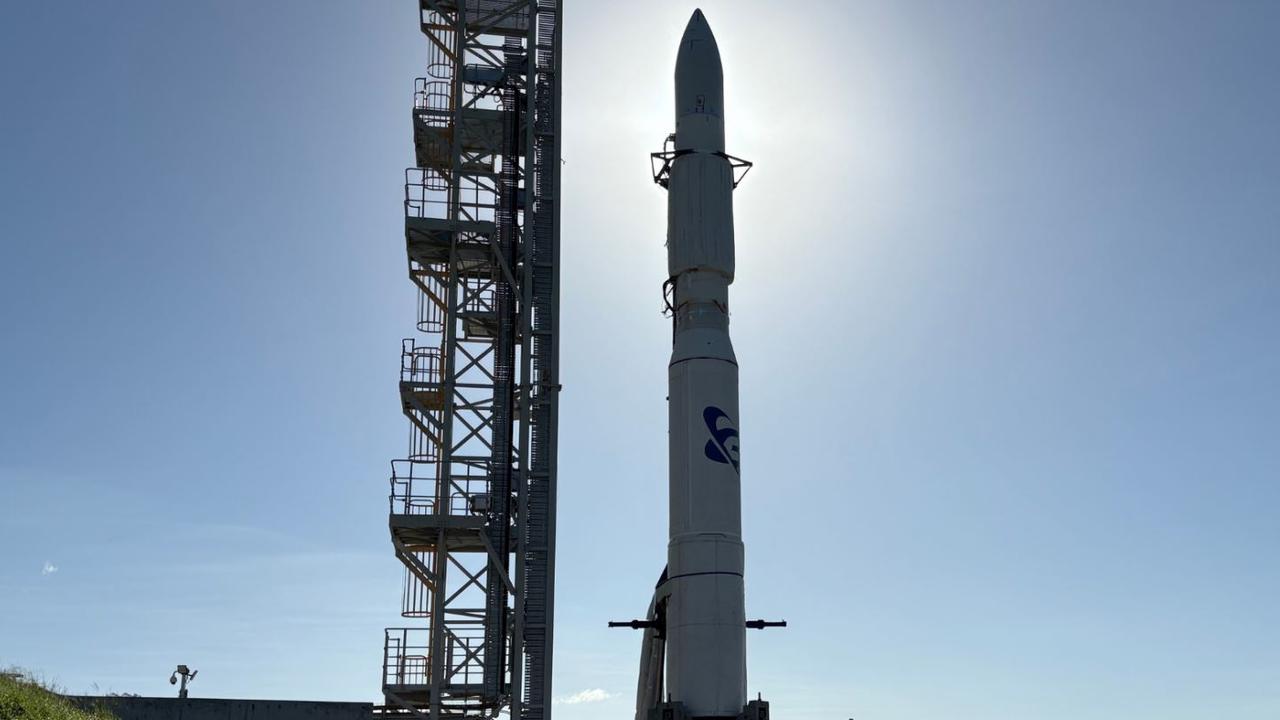‘Fountain of diamonds’ erupts from ground due to tectonic plate movement
Researchers have discovered a pattern where diamonds explode from deep beneath the Earth’s surface in huge, volcanic “fountains”.

Science
Don't miss out on the headlines from Science. Followed categories will be added to My News.
Researchers have discovered a pattern where diamonds explode from deep beneath the Earth’s surface in huge, volcanic “fountains”.
Diamonds form approximately 150 kilometres deep in the Earth’s crust and are brought to the surface very quickly in eruptions called kimberlites, travelling at between 18 and 133 kilometres per hour.
Researchers noticed kimberlites occur most often during significant disruptions among tectonic plates. After analysing the ages of kimberlites and the degree of plate fragmentation occurring at those times, scientists now believe the break-up of supercontinents is what causes these huge, diamond eruptions.

Thomas Gernon, a professor of Earth and climate science at the University of Southampton in England, says some of the most regular kimberlites in history occurred during the break-up of the supercontinent Pangaea, which formed many of the modern continents we know today.
“The diamonds have been sat at the base of the continents for hundreds of millions or even billions of years,” Professor Gernon told LiveScience.
“There must be some stimulus that just drives them suddenly, because these eruptions themselves are really powerful, really explosive.”

Professor Gernon and his colleagues identified a pattern over the last 500 million years in which tectonic plates start to pull apart and, 22 to 33 million years later, kimberlite eruptions peak. This pattern held over the last one billion years as well but with more uncertainty, given the difficulties of tracing geologic cycles that far back.
For example, the researchers found the break-up of the supercontinent Gondwana into Africa and South America, which occurred about 180 million years ago, kicked off a series of diamond eruptions 25 million years later.
Interestingly, the kimberlite eruptions seemed to start at the edges of the rifts — the places where tectonic plates rip apart — and marched steadily towards the centre of the land masses.

The researchers used multiple computer models of Earth’s deep crust and upper mantle to understand that pattern better.
They found, when tectonic plates pull apart, they create unstable regions that can trigger instability in neighbouring regions, gradually migrating thousands of miles toward the centre of a continent.
These instabilities create enough room for rock from the upper mantle and lower crust to mix. That creates a kind of soup made up of rock, water, carbon dioxide and many key kimberlite materials, including diamonds.
The result is “like shaking a bottle of champagne”, Professor Gernon said. The eruptions have huge explosive potential and buoyancy, rocketing the material up to Earth’s surface.
The findings could be useful in searching for undiscovered diamond deposits, as well as helping to explain why other types of volcanic eruptions sometimes occur long after a supercontinent break-up in regions that should be largely stable, Professor Gernon said.
“It’s a fundamental and highly organised physical process, so it’s likely not just kimberlites responding to it, but it could be a whole array of Earth system processes that are responding to this as well,” he explained.
Originally published as ‘Fountain of diamonds’ erupts from ground due to tectonic plate movement





